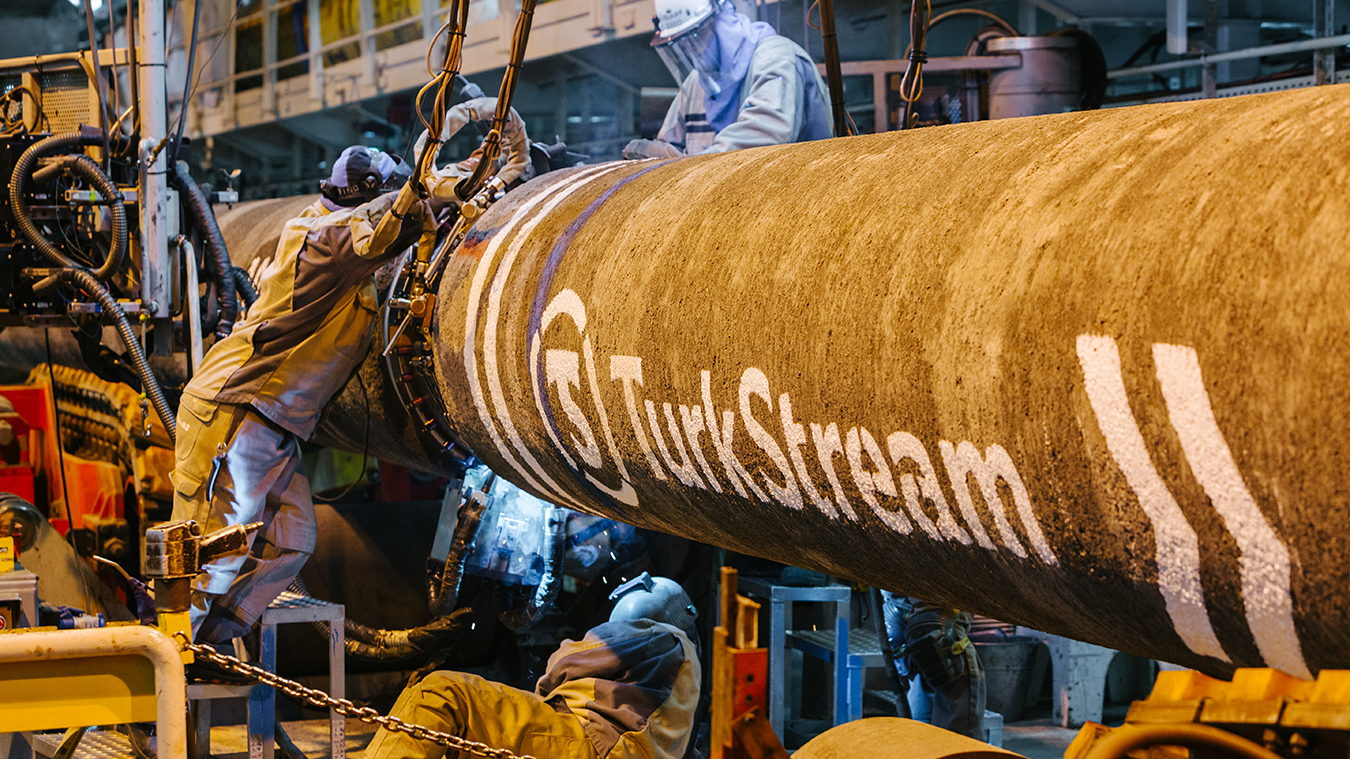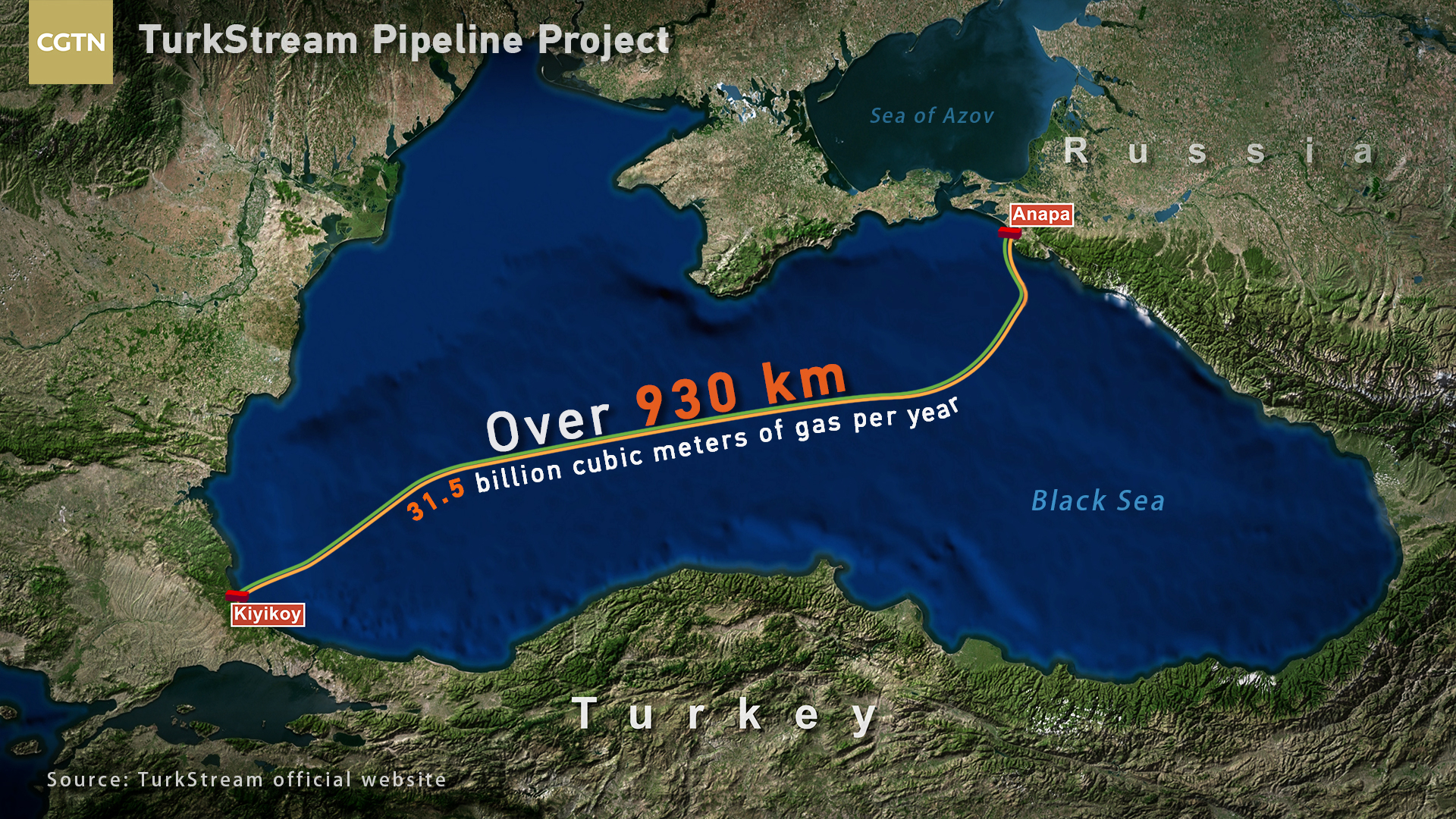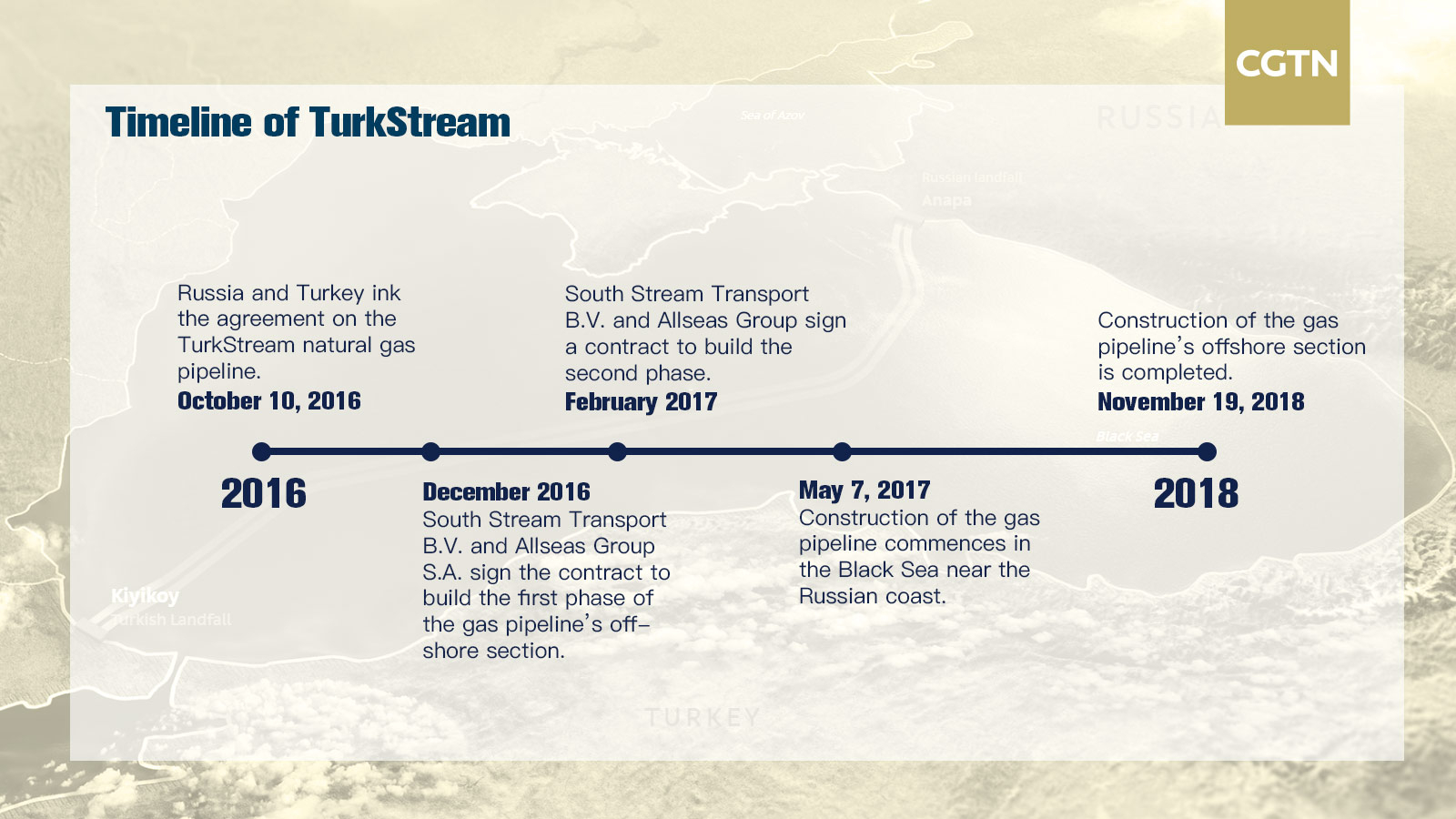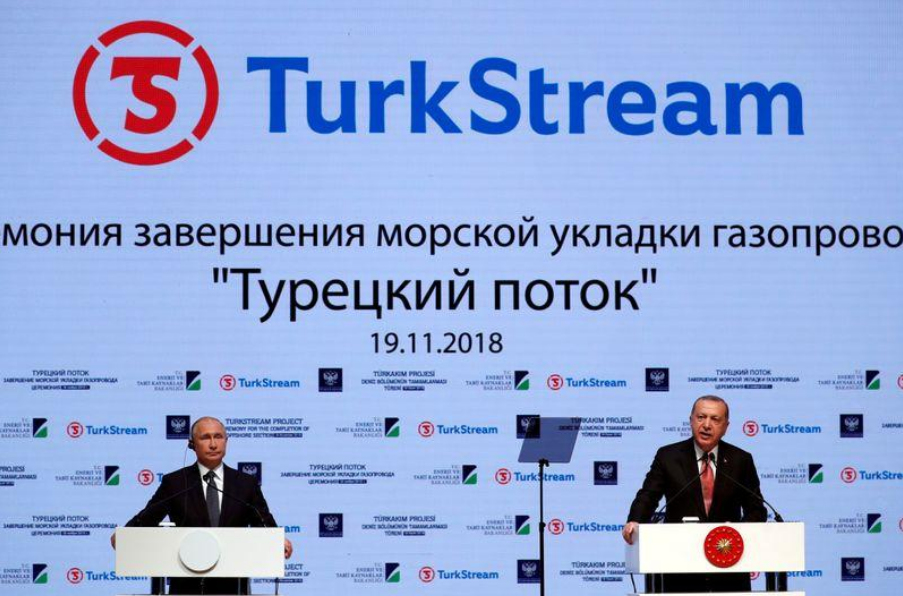
Photo via the TurkStream official website
Photo via the TurkStream official website
Turkey's President Recep Tayyip Erdogan and his Russian counterpart Vladimir Putin on Wednesday inaugurated the new TurkStream pipeline that will deliver gas to Turkey and central Europe, which Erdogan described in a televised speech as a "project of historic importance" for bilateral ties.
While the TurkStream will further boost Turkey's geostrategic importance, it also sparked fresh concerns over Russian gas dependency.
What is TurkStream?
The TurkStream project, which bypasses Ukraine, was completed by Russian and Turkish companies. It directly connects the large gas reserves in Russia to the Turkish gas transportation network.

The offshore component of the system consists of two parallel pipelines running through the Black Sea. The pipelines enter the water near Anapa, on the Russian coast, and come ashore on the Turkish coast in the Thrace region, near the town of Kiyikoy.
The first pipeline is intended for gas supplies to the Turkish market, while the second will carry gas to southern and southeastern Europe. It is expected to go from Turkey through Bulgaria, then to Serbia, Hungary, and Slovakia.
Running over 930 kilometers, the twin pipes will have a maximum capacity of 31.5 billion cubic meters of natural gas per annum.

Who benefits from TurkStream?
The project will make Turkey a transitory crossroads of natural gas and play a vital role in increasing European energy needs and security.
"TurkStream confirms Turkey's geostrategic position as an energy hub, coupling Ankara's ambitions in this field with Russia's drive to protect its share in the European Union natural gas market," Xinhua reported, citing diplomatic sources.
Turkey's Energy Minister Fatih Donmez has noted that Turkey wants to be an "energy center," while Turkey relies heavily on Russian gas imports.
The TurkStream project not only ensures the reliability of energy supplies to Turkey and Europe, but also contributes to Turkey's economic development through the resources it has used for the construction of the project.
While the pipeline will surely reduce transit revenues for transmission system operators significantly, including Ukraine's 3 billion U.S. dollars earnings from transitions, it will facilitate southeastern Europe's interconnectivity through the building of a second-string capacity through Bulgaria and Serbia, paving the way for Russian gas to reach Hungary, writes Julian Bowden, a senior visiting research fellow at the Oxford Institute for Energy Studies (OIES), in a report titled "SE Europe Gas markets: Towards Integration."

Russian President Vladimir Putin (L) and his Turkish counterpart Recep Tayyip Erdogan attend a ceremony to mark the completion of the sea section of the TurkStream gas pipeline in Istanbul, Turkey, November 19, 2018. /Reuters Photo
Russian President Vladimir Putin (L) and his Turkish counterpart Recep Tayyip Erdogan attend a ceremony to mark the completion of the sea section of the TurkStream gas pipeline in Istanbul, Turkey, November 19, 2018. /Reuters Photo
Why is the project controversial?
The United States opposes the project on the grounds it would strengthen Russia's economic and political grip over Europe and also erode Ukraine's role in natural gas transit.
U.S. President Donald Trump on December 20 signed a 738 billion U.S. dollar National Defense Authorization Act that includes sanctions against the Nord Stream 2 and TurkStream gas pipelines. The sanctions include asset freezes and revocations of U.S. visas for the contractors.
Russian Foreign Minister Sergei Lavrov reaffirmed that "neither Nord Stream 2 nor TurkStream will stop."
Opinions in the EU are divided and some members see these gas pipelines as a threat to energy security.
Russia was the largest supplier of natural gas to the EU, with about 40 percent of the EU's imports of natural gas coming from Russia in 2017, according to Eurostat.